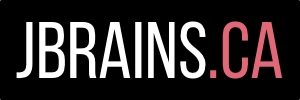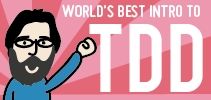Getting Unstuck: Unleashing the Expert Within!
Some of you know about Jerry Weinberg’s “fieldstones” approach to writing. You build a system for easily capturing thoughts of various lengths: a phrase, an idea, a paragraph, whatever. Periodically you review these fieldstones, look for themes, then collect them into a larger piece, fit for publication. This sounds a lot like “Getting Things Written”. It occurs to me that you can use this technique to develop training material. It occurs to me that that’s exactly how I did it, myself. Let me back up a little. When people find out that I retired at 34, they ask me how. The conversation steers itself after a while to how I got started working independently. Looking back, building my training skill and experience helped me a lot. People buy training, in part because they want someone to tell them what to do next. You can probably remember a few instances of this yourself, when you needed to figure something out and lamented not having someone to just show you what to do. People also buy training because they understand how to buy training. Some people’s job consists of buying training! This gives you an established way in: your market knows how to buy your services, and they want your services. Now you need at least two ingredients: a training course to sell them, and for them to learn your name and banking information.
You’re a trainer, but you don’t know it!
Isn’t that supposed to rhyme? Anyway. You probably have some useful information that you convey to others, either by talking face-to-face, through blog posts, or possibly even through a self-published book. If you offered training, then companies will buy it, if they know you and like you. This article focuses on developing the material; we can talk about getting people to like you another time. Before I delivered my first training course, I had absolutely no idea how to develop course material. None. I had all this information, I regularly answered questions on mailing lists, but I didn’t know how to package it into a class. Then I started working for a technology training company, where I learned not only how to write course material, but how to teach. Or perhaps, I learned how not to do both of those things. If you want to find a job with a training company, then go for it. I didn’t love the experience, but I value what I learned from it. I can think of another path. Fieldstones. Don’t feel like you have enough content for a 3-day course? How about 2 hours? Do you think that you have enough information to keep a group of technicians (programmers, testers, business analysts, whoever you want to train) busy for 2 hours and give them the vague feeling that they’ve learned something? Great! You can start there. Do you have a 1-hour presentation in which you describe how to do something specific (as opposed to ranting about varied things)? Great! You can start there, too. Add a 1-hour exercise to a 1-hour presentation and you have a 2-hour training mini-course. Now ask every user group that could possibly be interested to let you present your mini-course to their audience. The first few times you do this, you will probably suck. Don’t lose hope; but rather, get those experiences out of the way, so that you can start kicking ass, or at least not sucking. You’ll get better with practice. Not only will you improve your teaching technique, but you will adjust your course content based on your audience’s feedback. Is your audience falling asleep during your presentation, but engaged during the exercise? Less talking, more doing. Is your audience asking you really tough questions? Great! More fieldstones! These questions become future “modules” in your training course. If you listen to your audience, they’ll tell you what to teach next. After you teach a handful of these fieldstone mini-courses, you’ll almost certainly have a common theme that you can turn into a 3-day course. Just stitch the fieldstones together, just the way Jerry teaches to stitch fieldstones into articles, or chapters, or books.
From Fieldstones to Cash Money
I developed my World’s Best Introduction to Test-Driven Development training course this way, and now I’m looking into offering it as remote training. (If you or your company is adventurous enough to experiment with remote TDD training, then click here and start today.) Every training course I offer started out as a handful of 30-minute talks and 2-hour mini-courses. This stuff really works! After you’ve run your fieldstone courses at user groups and people get to know and trust you, submit them to conferences to run either as workshops during the main conference or as pre-conference tutorials. Many conferences offer tutorials for an extra fee and will split the revenue with you. This gives you some of the best feedback of all: will people pay for this? When you see that people love your mini-courses, then you know which fieldstones to flesh out into full-fledged courses. You can stitch 2 or 3 fieldstone mini-courses together, add a few more exercises, and sell it as 3 days of world class training… and people will buy it. (I mean that in the good way, not in the “sucker born every minute” way.) So there you have it: the Fieldstones method for developing training material and taking a giant step towards becoming a consulting megastar. It just works.
It’s Your Turn
To start, take 5 minutes right now and write down every idea you have for a training session, big or small. Pick the ones for which you feel the most energy right now. (Thank you, Diana Larsen, for teaching me to follow my energy and not necessarily what I think other people expect me to do.) Now pick one and write down which user groups might be interested in letting you present on that topic. Schedule it. Great! Now you have no choice but to follow through. Remember that thing about getting people to like you? Don’t worry about that. Your enthusiasm for the topic you’ve just selected will carry you through. Just get yourself in front of an audience and they’ll love you. If you get stuck, just come back here and ask your questions, or if you’d rather ask me in private, click here and ask away. I’ll see what I can do to help. Go get ’em!


